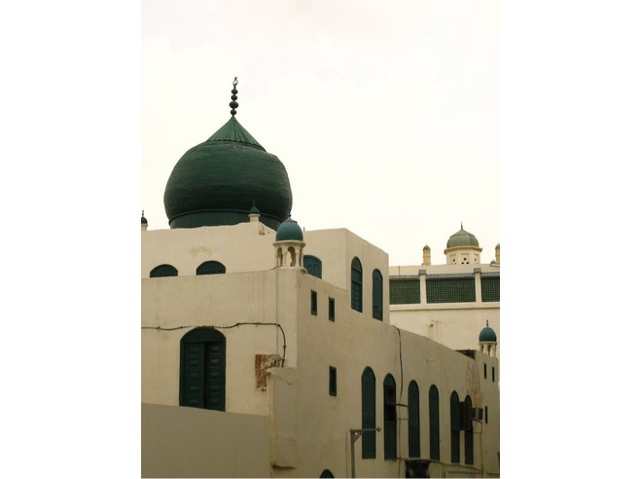At both sides of the Creek, resorts were build with either private cabins or beach houses, or rentable cabins.
Obhur Creek seen from the plane.
The Red Sea Coastline.
The days there were spend with snorkling, diving, waterski, swimming, sailing and barbecues.
Aiga island.
Travelling southwards to the city of Jubail, you can find beautiful aquatic life.
Five important coral atolls are found there, named Harqus, Karan, Kurayn, Jana and Jurayd. It is also a protected breeding ground for turtels.
The corals are extensive and colourful, so is the fish life. Sweetlips, Angelfish, Parrotfish, Lobsters and Octopus are only a few of the fishtypes that are living here.
Another beautiful coral rich area are the Farasan Banks, or islands, which is a 90 minute ferry journey from the city of Gizan. The islands are lumps of coral that are barely a few meters above the water. The beaches are made of dead coral, and vary from smooth white beaches to rough sand. The main city is Farasan.
The true beauty is underwater: an abundance of coral reefs, flying rays, dolphins, sea turtles, whale sharks and flamingos.




















































